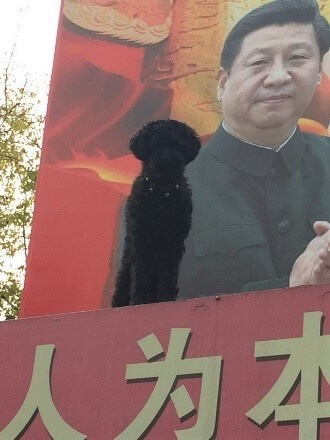Source: The authors, 2017.
While walking the streets of Beijing in the years 2016/17 we noticed one thing: there was a very high number of small dogs with curly hair. A lack of expertise on dog breeds brought us to the conclusion that Beijing’s citizens have a thing for poodles in all shapes and colours. We made a game out of it: whenever someone came across a little dog with curly hair, the person who was the first to shout out “Poodle” earned a poodle point. The first one to collect 100 poodle points happily received a little blue poodle statue.
However, back in Europe, we started a little research project on the topic – Why were there so many poodles in Beijing? The social and political aspects of something that started as a game among friends will be summed up in this article.
In September 2003 the authorities introduced a vaguely defined
prohibition of dangerous dogs within the eight inner districts of the city of Beijing. The law issued by the municipal bureau for agriculture and commerce was further specified about a month later. It included a list of dog breeds classified as dangerous and the addition that reached above the height of 35 centimetres were forbidden in the city centre.
However, for the following decades, owners of large dogs could still walk their animals in the inner districts without much fear of prosecution. The issue
popped up again in 2013 when the authorities suddenly started to very rigorously implement the law after a decade of lax enforcement. The international press picked up the topic as animals were confiscated and their owners had to pay fees up to 800 US$. It is unclear what happens to the confiscated dogs. According to the
New York Times animal rights activists fear the animals might end up at the dog-meat market.
Furthermore, all dogs must be registered at the address of their owner and the registration must be renewed annually. The
one-dog policy allows a maximum of one dog per household within the fifth ring road. In addition to the above mentioned dangerous dog breeds and those taller than 35 centimeters, the police
take away unregistered dogs. An
annual rabies vaccination is mandatory in order to get an extension of the license. More recently,
the activity of walking dogs was added to the list of uncivilised behaviours in Beijing’s public parks, and dog owners are no longer allowed to take their puppies to parks, sights and shopping malls.



